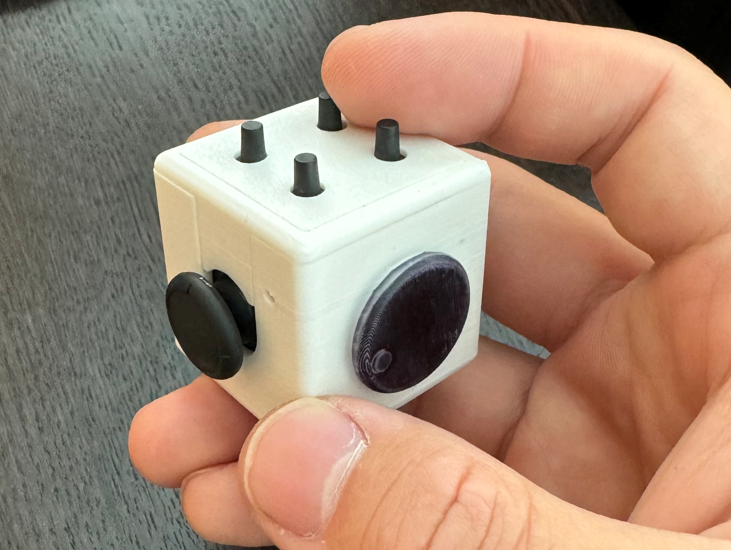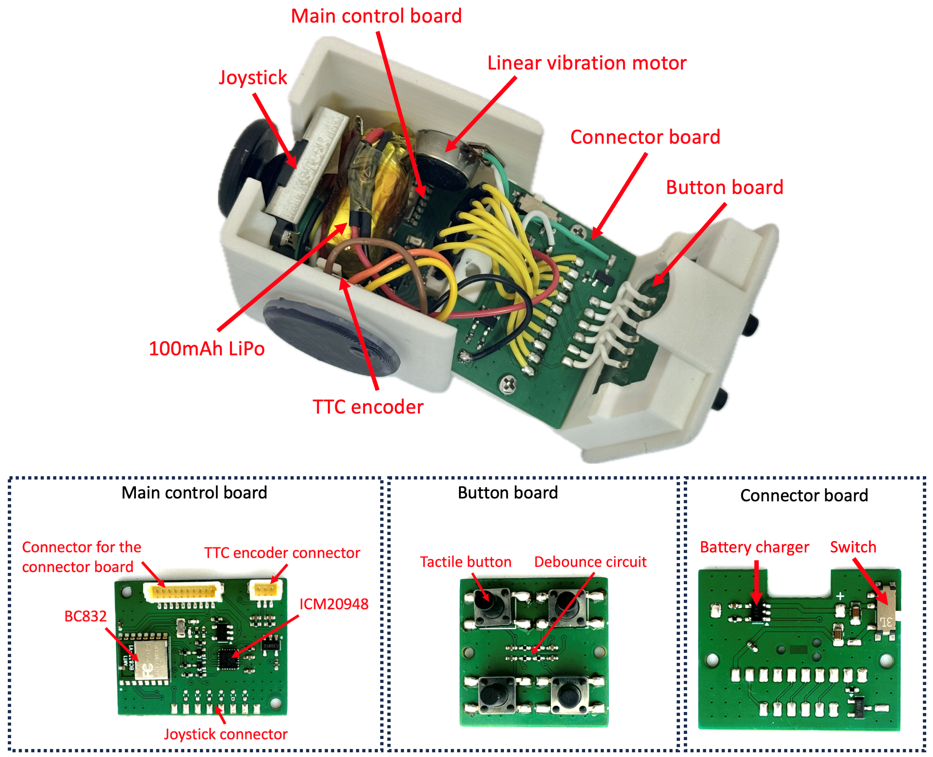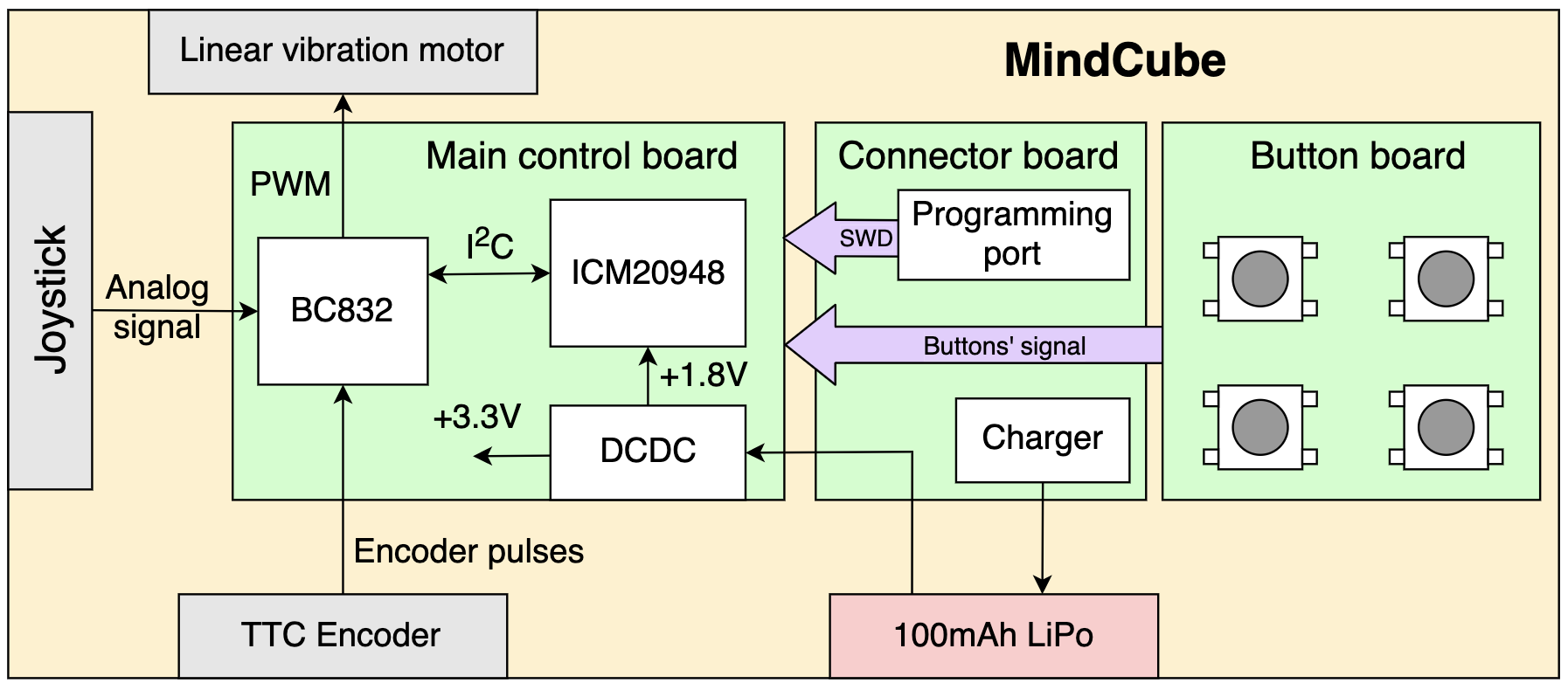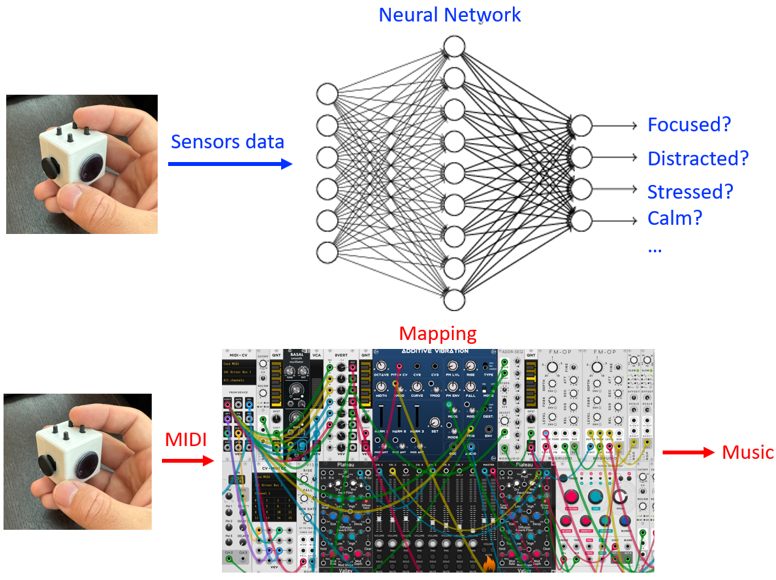MindCube
Liu, F., Haddad, D.D. and Paradiso, J., 2024, October. MindCube: an Interactive Device for Gauging Emotions. In Adjunct Proceedings of the 37th Annual ACM Symposium on User Interface Software and Technology (pp. 1-2). [PDF]
The different ways people play with a fidget cube can infer their emotions.

The MindCube is an interactive device designed for studying emotions. Resembling a fidget cube toy commonly used for stress and anxiety relief, the MindCube features a compact cubic shape (3.3 cm x 3.3 cm x 3.3 cm), making it small, easy to hold, and ideal for playful interaction. Like a fidget cube toy, each side of the MindCube is equipped with various interactive inputs, including tactile buttons, a small rolling disk, and a joystick. Additionally, the device is fitted with a 9-DoF IMU (Inertial Measurement Unit) to measure real-time orientation when held by the user. Furthermore, the MindCube includes a linear vibration motor to provide haptic feedback to enhance the interactive experience.
A MindCube is composed of three PCBs (printed circuit boards) - main control board, connector board, and button board - a joystick, a TTC encoder, a linear vibration motor, and a 100mAh LiPo battery.

The three PCBs are responsible for different functions. The main control board is responsible for both control and communication functions. It is equipped with a BC832 BLE SoC (system on chip), a 9-DoF IMU (ICM20948), and connectors for interfacing with other boards and modules. The button board features four tactile buttons with debounce circuits to ensure clean signal edges when the buttons are pressed and released. Positioned between the main control board and the button board, the connector board serves as a relay, linking the buttons to the main control board. Additionally, it includes a battery charger circuit. An NMOS-FET is used to drive the linear vibration motor via PWM (pulse width modulation). On the back of the connector board are a charging indicator LED and a programming port, providing visual feedback and ease of programming.

The BC832 samples all sensor data at a frequency of 50Hz, packages the collected data, and transmits it to a computer via BLE. A custom-designed program running on the computer logs this data, facilitating further processing, model training, and analysis.
The MindCube is a compact, playful, and interactive cubic device that fits comfortably in one hand. Equipped with multiple input devices, the MindCube captures detailed data on how individuals interact with it across various emotional states. One potential application is as an interactive tool for collecting data during repetitive interactions with users. This allows for the study of user behavior and interaction patterns in different emotional states. By incorporating periodic short surveys, we can gather additional context to train efficient neural network models, enabling real-time emotion state measurements. This combination of interaction data and survey responses helps in building robust models for assessing emotional states. Additionally, the MindCube is equipped with a linear vibration motor that can provide haptic feedback, offering real-time alerts or interferences when necessary. This feature enhances its utility as a tool for real-time emotional monitoring and intervention.

The MindCube is a versatile platform that can also function as a compact multimodal controller, such as a music controller. Sensor readings from the MindCube can be converted into MIDI messages and streamed to software like VCV-RACK, enabling various mappings to create different musical effects and compositions. This capability allows the MindCube to serve not only as an interactive data collection tool but also as a creative interface for music production.